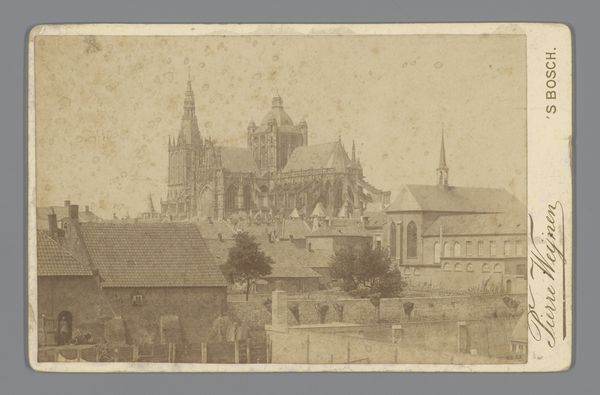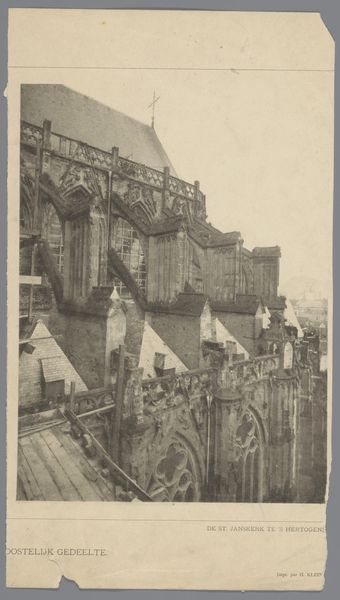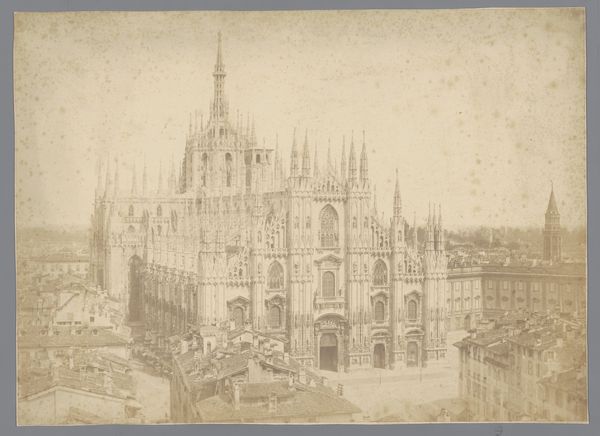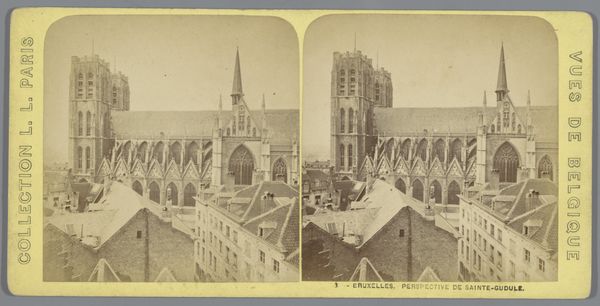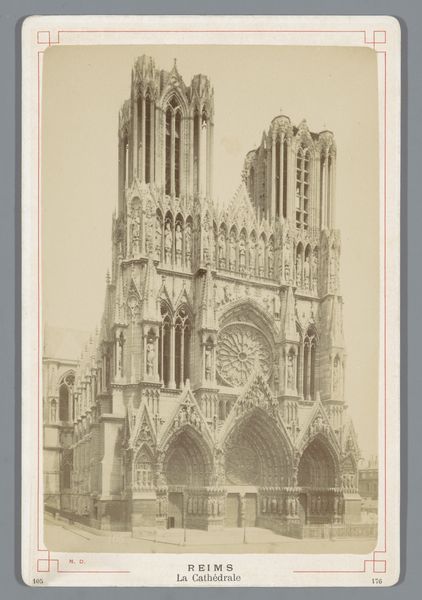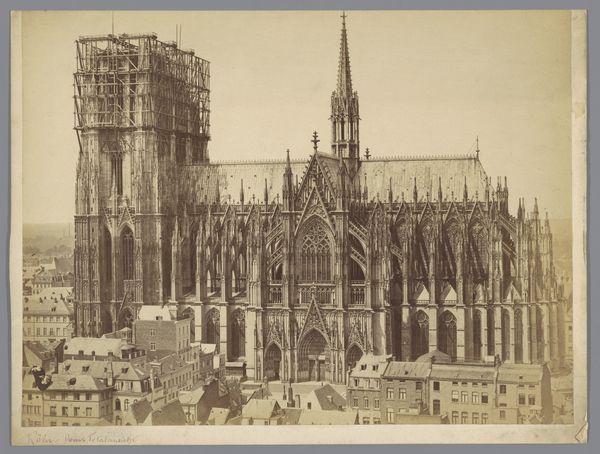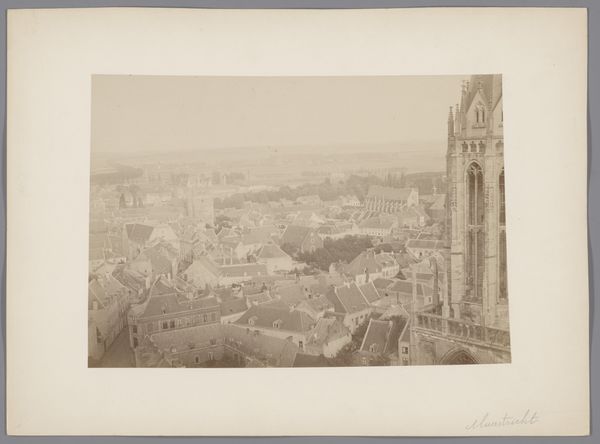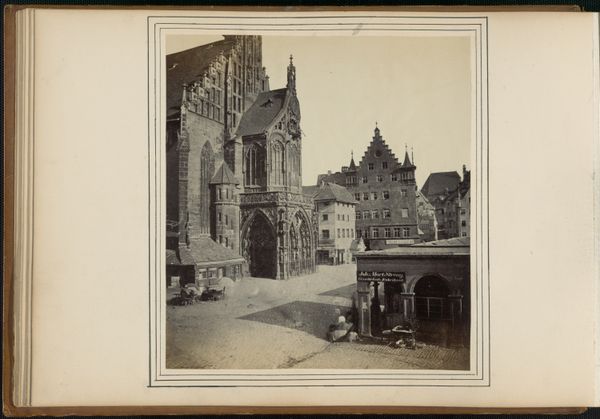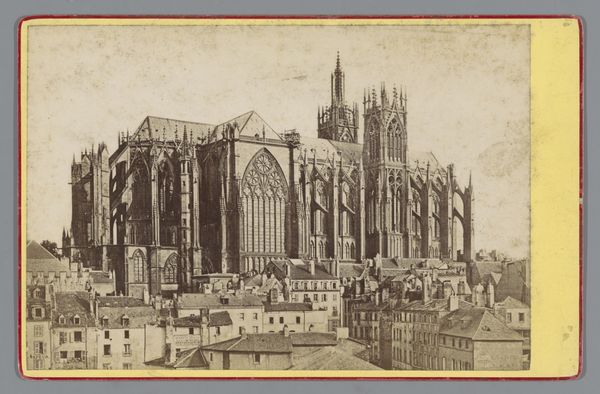
photography, gelatin-silver-print, architecture
#
photography
#
gelatin-silver-print
#
cityscape
#
architecture
#
realism
Dimensions: height 230 mm, width 405 mm, height 338 mm, width 484 mm
Copyright: Rijks Museum: Open Domain
Curator: Here we have a photograph, believed to be taken in 1858 by Olga Hompesch. It's a gelatin silver print entitled, "View of the Cologne Cathedral under Construction." What strikes you first about it? Editor: The sheer ambition of the structure, even incomplete, is overpowering. You get a sense of the generations of faith and effort poured into this... monument. Curator: It’s interesting to consider the labor involved. Look at the scaffolding; a skeletal web clinging to the stone. Photography at this time still required significant resources and expertise. The production of this image in itself signifies social and economic investment. Editor: Yes, and within that image, the cathedral, still growing, becomes a potent symbol of civic pride and spiritual aspiration, quite a feat given its protracted construction, started in the medieval era. Curator: Precisely. The photograph serves not just as a record, but also a document that reveals a shift in production. Mass manufacturing created railways that provided easy transit for materials from distant quarries. The rise of print media broadcasted these ambitious projects far beyond the local community. This allowed materials and methods to converge into what would become global style. Editor: Consider the cathedral’s towers, incomplete and reaching towards the sky, signifying hope, maybe a plea to a higher power? Even though it is unfinished, Hompesch captures an emblem of strength in the very heart of Cologne. The contrast between its timeless monumentality and the surrounding rooftops of common life is extremely evocative. Curator: And beyond the symbolic interpretation, we need to acknowledge the technological process that gives this imagery weight. Hompesch’s command of the wet collodion process meant a dark room, glass plates, chemical know-how, heavy equipment—this image stands at a nexus of industrial chemistry and the burgeoning culture of mass-produced images. Editor: In the end, both those elements intertwine. It’s precisely the fusion of craftsmanship and spiritual longing, recorded through new technologies, that makes this image resonant even now. Curator: I concur. This intersection of technology and aspiration is powerful. Looking at this image certainly changes one's perspective on nineteenth-century production.
Comments
No comments
Be the first to comment and join the conversation on the ultimate creative platform.
